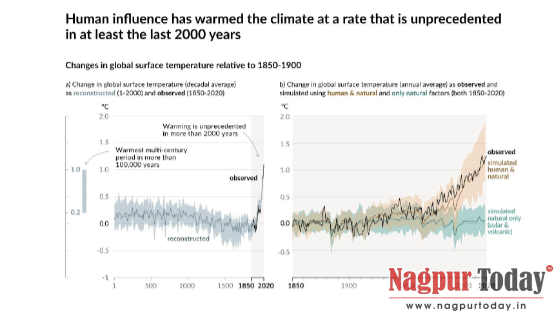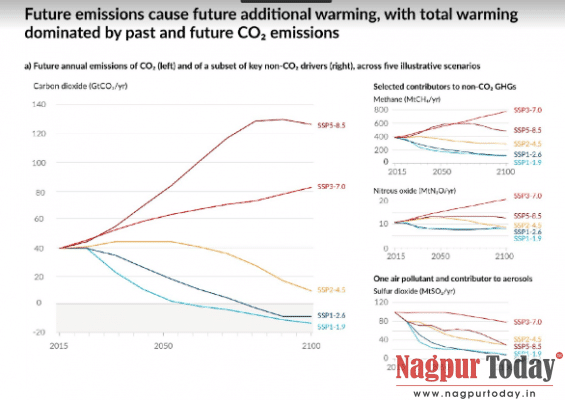Climate Change seems normal in newspaper headlines like a chapter in our EVS book but more devastating in reality. The speed and spread of destruction in recent years have sound alarm by the climate scientist.
Wildfire in the Amazon rainforest grips a large area of South America in early January 2019. Past month forests of Greece, Turkey, Spain, Italy and Lebanon are burning one by one. The California state of America is facing the most dangerous wildfire in its history for the second year in a row. Flash flood in Europe. Ones in a 1000 year downpour flood in China or the drought in Iran. All these events are unexpected, no one had predicted such disasters.
The United Nations has a panel on the environment, the Inter-Governmental Panel on Climate Change (IPCC). Early this week, it has presented its detailed report titled, ‘Climate Change 2021: The Physical Science Basis’, related to the threat of climate change, its impacts and future risks, and options for adaptation and mitigation. After two weeks of brainstorming, 195 countries had approved the report. Most of the world’s nations are unanimous on what has been said in this report. It is estimated that scientists analyzed almost 14,000 climate change research papers worldwide.
The report says world is likely to breach its goal of the Paris Agreement 2015, limiting global warming to below 1.5C compared to the pre-industrial mark within twenty years (2040) in a best-case scenario. The instant, rapid, and drastic reduction in greenhouse gases can only prevent extreme weather and widespread devastation. Every tonne of greenhouse release in the atmosphere is likely to compound the accelerating effects of heating.
Human intervention is the primary driver of induced heat waves, famines, droughts, cyclones, reduce oxygen levels, and heavy rains have become more intense and frequent since the 1950s. Drought has increased by more than 90%. Major hurricanes and typhoons have increased more than 66 percent since the 1970s. Globally averaged precipitation has increased since 1950s over land.
The climate system has caused global sea levels to rise through ice melting from glaciers and ice sheets on land and thermal expansion from the ocean. By 2100 under very high greenhouse emission, sea level may rise about 1 m and at low emission, it may rise about 0.35 m by 2050 and 0.5 m by 2100, compared to 1900 level. The report said that India’s 7517 km coastline would face significant threats from rising sea levels. Around 28.6 million people of port cities – Mumbai, Surat, Chennai, Kolkata, Kochi and Vishakapatnam will be exposed to coastal flooding if sea levels rise 50 meters.
Arctic sea ice area had reached its lowest level since at least 1850, in last one decade. Arctic is likely to be partially sea ice free in September at least once before 2050. Ocean and land carbon sinks are projected to be less effective with increasing C02 emission and slowly it will accumulate in the atmosphere.
Experts say that there is still some hope left, which would be possible with a shared effort. If carbon emissions are reduced by half by 2030 and to NetZero by 2050, the temperature can be prevented from becoming uncontrolled. We have new and safe energy options available. Now all the responsibility of all these to get the desired result is on the governments’ will.
The leaders of 196 countries are gathering in Glasgow, Scotland in November 2021 to discuss whether enough has been achieved since 2015’s landmark Paris climate agreement. There are enormous expectation rests on this conference.It is being said that the future of Planet Earth is largely depends on this conference. It should be expected that our public representatives will unite to save human civilization by forgetting mutual enmity.

Kunal A. Rahangdale
By Kunal A. Rahangdale
( Author is editor of book titled, “Climate Change Explained for one and all”. )

















